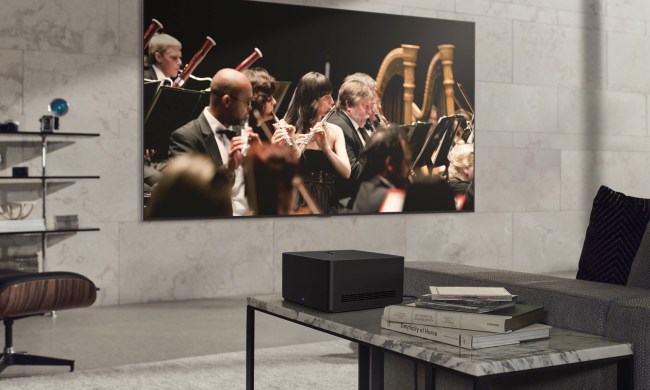
Not all QLED TVs cost a small fortune. The discount bin is often swarming with must-have QLED 4K TVs, like the Samsung Q60R and Vizio M-Series, and even 8K TVs. The catch? You need to know where to look to find them. That’s where Digital Trends comes in: We’ve rounded up the best Cyber Monday QLED TV deals available right now, with the highlight being a 58-inch Samsung Q60R QLED 4K TV for $800 — down $100 from the usual $900.
Shopping on a budget? Head over to our selection of the best Cyber Monday TV deals, where pricing starts at a more modest $250 for a 43-inch Toshiba 4K TV. That’s because the televisions featured here at QLED TVs, souped-up LED TVs that draw richer detail and more accurate color from the scene at hand. These are an acquired taste, though, appealing to those after more than what an LED TV has to offer, but not what a top-of-the-line OLED TV brings to the table.
Best Cyber Monday QLED TV deals
How to choose a QLED TV
Size. This is the first stop when choosing any new television. Measure the space available in the area it will reside, then write down the figure (we don’t want to make a mistake here). Next, make a note that screen size is not equal to the length of the television itself. You will need to consult the dimensions for this measurement, which takes us on to the next step: Gather a handful of QLED TVs that could do the trick, then check their dimensions.
Found a couple that will fit? Now, let’s start to tunnel in one the one that’s best suited to you. Because there are two main brands that make QLED TVs, this shouldn’t be too difficult. If it’s out-of-the-box streaming you’re after and cash is tight, opt for a Vizio. Rather have a television that’s bound to stand the test of time? Choose a Samsung. After all, it didn’t secure its title as the world’s largest television manufacturer by churning out slop.
To be clear, this doesn’t mean that Samsung’s QLED TVs can’t stream content to boot. They’re armed with the latest version of its Tizen OS smart software, which offers one-click access to all of the top streaming services, like Amazon Prime Video and Netflix — and that’s bound to be more than enough for the average viewer. But if you have more niche viewing habits, the Vizio with its built-in Chromecast may be the better choice.
However, unless you’re shopping on a strict budget, we’d almost always recommend going with a Samsung. It’s the creator of QLED, and it licenses the name to other manufacturers that wish to adopt it, so it knows a thing or two about making them. The only difference is that you’ll be paying a premium to have a Samsung — Vizio’s models are considered more affordable alternatives. Plus, a $30 Roku will easily bridge the streaming gap.
Are QLED TVs better than OLED TVs?
In short, OLED TVs are better than QLED TVs. Why? Because they have better viewing angles, can reach a more obsidian-like black level, and consume a lot less power. They also have a faster response time, less input lag, and a higher refresh rate. But this best-in-class viewing doesn’t come cheap, which is why those who don’t necessarily need the best experience that money can buy (or can’t afford it) opt for second-best: A QLED TV.
In the real world, though, there’s little between them. Unless you had an OLED TV and a QLED TV in the same room, you wouldn’t even know what you’re missing out on. The fact of the matter is, if your run-of-the-mill LED TV isn’t cutting it anymore and you’re looking to breathe fresh life into your entertainment setup, a QLED TV is a fantastic way to go: The richer color and more accurate detail, even without HDR, is a monumental step up.
Do QLED TVs have HDR?
Yes, all QLED TVs have HDR. Remember: They are designed to represent some of the finest hardware manufacturers have to offer, so it wouldn’t make sense if they weren’t equipped with the latest software, too. After all, it’s HDR that draws richer detail and more accurate color from the scene at hand, bringing the picture to life. Samsung invented its own HDR format to do this: HDR10, which was later succeeded by HDR10+ — the latest version.



